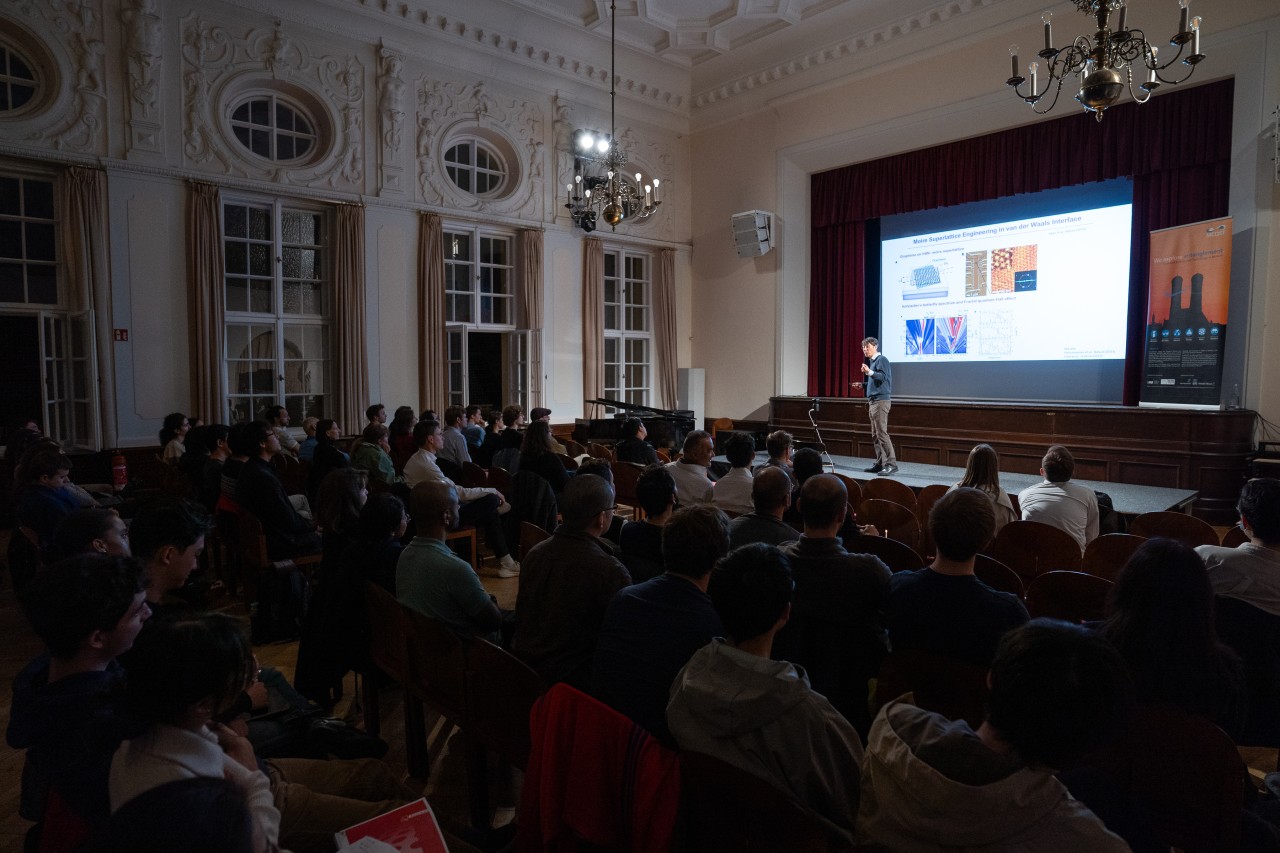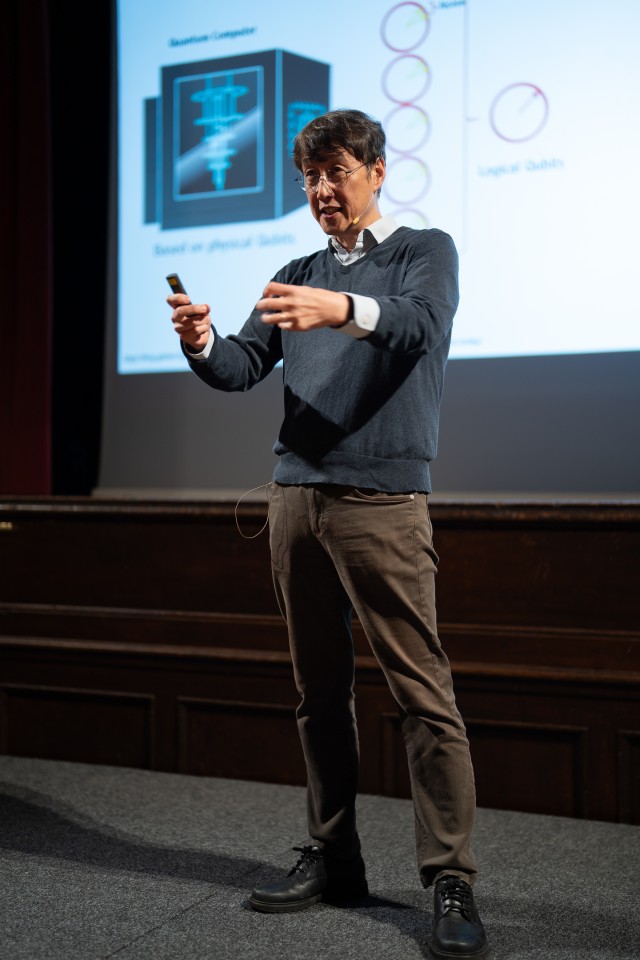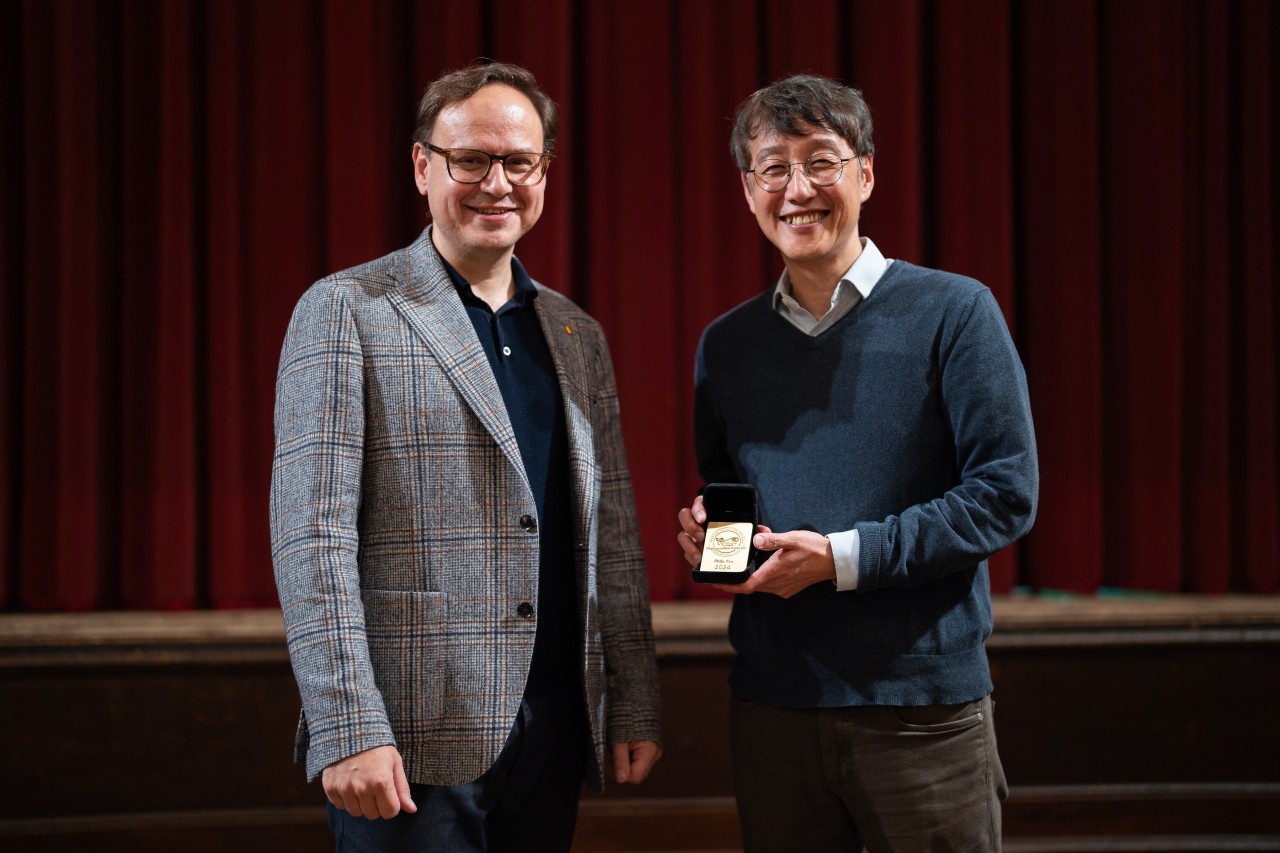MCQST awarded physicist Philip Kim the 2024 Distinguished Lecturer award. During his visit, we discussed his pioneering research on 2D materials, particularly on graphene.
Materials measuring just one atom thick are one of the hottest topics in research labs. These wafer-thin materials hold great potential: Among other things, they could help advance computer technology, speed up data transmission, increase the efficiency of batteries and solar cells, and make composite materials stronger. Philip Kim is a pioneer when it comes to researching these 2D materials. The Korean scientist, who works at Harvard University, was one of the first to study the fundamental properties of graphene, the most well-known 2D material. Today, he and his team are on the search for new, physically interesting variants of these super-flat layers.

Pioneering the future of 2D materials
After graduating from Seoul National University with a bachelor's degree in physics, Kim went to the United States to earn his master's and doctoral degrees at Harvard. He then accepted a postdoctoral position at Berkeley, and from 2002 he was a faculty member in the Physics Department at Columbia University in New York. In 2014, he returned to Harvard University – this time as a professor of physics. By this time, he had long since established himself as one of the leading experts in his field.
To date, the most prominent 2D material is graphene – two-dimensional carbon. "In the early 2000s, few people were researching graphene," Kim recalls. “I think there were only a handful of groups working on it.” This all changed abruptly in 2004, when physicists Andre Geim and Konstantin Novoselov at the University of Manchester made a surprising discovery: They were able to isolate graphene in a simple but effective way – by peeling a strip of Scotch tape off a block of graphite. "It revolutionized the field and it's a pretty simple way to obtain this material," says Philip Kim. "My group had been working on different approaches for obtaining graphene, but when we saw this, we realized there was a much faster and easier way. Hence, we switched to this method as well."

This made graphene an exciting candidate for future ultra-fast electronic components, but there was a problem: Unlike silicon, graphene is not a semiconductor, which means it cannot be used directly for building transistors and computer chips. In 2007, Philip Kim used a clever trick to change that: "By forming the graphene into nanoribbons, we achieved a kind of one-dimensional confinement. My group was one of the first to demonstrate that nanostructuring graphene into small nanoribbons can open up a band gap in the material." The presence of such a band gap is essential for a semiconductor, and Kim's team succeeded in creating it. There is still a lack of industrial manufacturing techniques for the production of a commercial graphene chip using nanoribbons but future advances in chemical processing techniques could well change that.
"What is interesting is that each of the 2D materials has different properties. By stacking them on top of each other, you can create entirely new properties – properties that do not exist in the individual layers."
Today, Kim's research group is moving beyond graphene to more complex 2D materials called heterostructures. The experts have succeeded in stacking layers of different 2D materials on top of each other, thereby creating a kind of nano-sandwich. "Each of these 2D materials can be thought of as a Lego brick that can be stacked and combined with other bricks," explains Philip Kim. "What is interesting is that each of the 2D materials has different properties. By stacking them on top of each other, you can create entirely new properties – properties that do not exist in the individual layers. This makes it possible to create completely new functions".
For example, Kim's team is working on combining graphene with thin layers of superconducting niobium nitride. The idea behind this: "This type of topological property could provide highly stable quantum behavior. This could be of interest for applications such as quantum computing," says Philip Kim. “We also asked ourselves: Is there a way to make parts out of this 2D material?
Another area of research is the interaction of 2D materials with light. "These materials can be structured such that these light-matter interactions become very strong because of the powerful quantum effects," says Kim. "There are efforts to make use of this strong light-matter interaction for the production of novel optoelectronic components. Components such as optoelectronic switches are also used in fiber optic communications. If they could be made faster using 2D materials, higher data throughputs are conceivable.

"For me, looking at a topic from a completely different point of view is one of the most important ways to come up with new ideas.”
And what does Philip Kim have planned for the next few years? He intends to continue pursuing his projects with determination, but also to embrace the unexpected. “History shows us that discoveries often come about unexpectedly,” he says. "If we look for superconductivity, for example, we may discover completely different physical properties that we did not expect. And I am sure there are many more surprises waiting to be discovered.”
His main source of inspiration will probably not change much – his discussions with young talent on his team. "People who are just entering a field often have an entirely different perspective on it," says Philip Kim. "Talking to these young people can be really inspiring. For me, looking at a topic from a completely different point of view is one of the most important ways to come up with new ideas.”
MCQST Distinguished Lecturer
During his visit to MCQST as a Distinguished Lecturer, Philip Kim delivered three tailored lectures, each designed for a specific audience. He presented a colloquium for the local scientific community, a specialized seminar for researchers in his field, and a public lecture aimed at a broader audience. The public lecture, held in October 2024 at the Scholastika, was recorded, and you can watch it below.